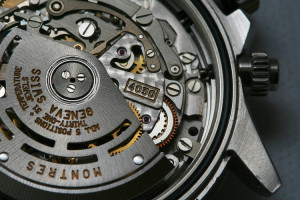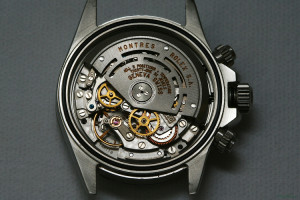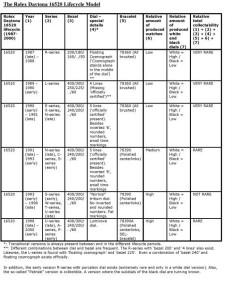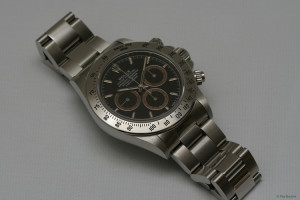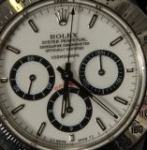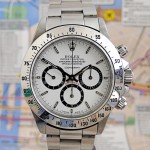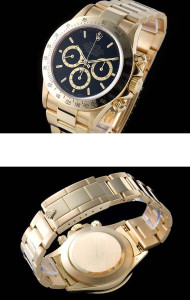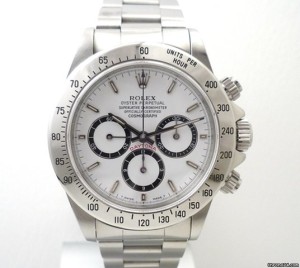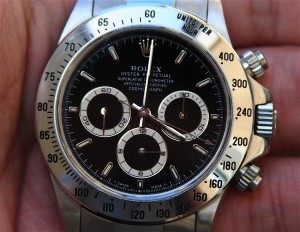The Rolex Daytona and the Zenith El Primero caliber 400
After having trusted on the hand winding Valjoux 72 (and several variations) movement to drive the Daytona, Rolex in 1987 decided to start using a Zenith movement instead of the Valjoux.
The El Primero calibre 400 movement was first put on the market by Zenith in 1969 and, after a period of several years, was back again in 1986. Most important feature of the calibre 400 was that with 36,000 vph it was a rapidly ticking movement (normally movements had 18,000, 21,600 or 28,800 vph). The frequency of 5 Hz made the movement more accurate.
The Zenith calibre 400 was the only chronograph movement with automatic winding that passed all the high Rolex standards for a movement. But that did not mean that Rolex just bought the movements from Zenith and put them in the case.
The following adjustments were made by Rolex before using the movement:
- a new escapement with a much bigger, free moving balance and a balance coil with a Breguet overcoil; a by Rolex preferred and more expensive configuration that leads to higher accuracy
- 36,000 vph was brought back to 28,800 vph; this lowers the need for maintenance
- removing the date function from the movement
In total about 80% of the movement was modulated by Rolex before it was good enough to drive the Daytona. The Rolex calibre 4030 was born.
The Daytona with this calibre was the ref 16520. Ref 16520 differed from the former generation Daytona’s in that it had sapphire glass and some esthetic changes. Under influence of the other sports watches from Rolex, for instance the Submariner, the case diameter had grown from 37 to 40 mm. The surface of the dials were now lacquered and shiny versus matte (black) or metallic (silver). The dial had metal hour indexes inlaid with radiant material. The sub dials had a thin scale with an opposite colour and around this a metal rim.
Rolex has produced the ref 16520 from 1987 until 2000. From 2000 onwards the Daytona had a fully inhouse manufactured movement.
During the period 1987-2000 there are six periodes in which small changes were made to the Daytona:
- 1987(late)-1988: ‘floating’ Cosmograph; ‘Cosmograph’ printed in the middle of the dial
- 1989-1990(early): 4 lines; ‘officially certified’ not printed on the dial
-1990(early)-1993(early): ‘inverted’ 6; the number ’6′ on the sub dial at 6 o’clock is inverted and looks like a ’9′
The complete story of the production of the Daytona ref 16520 between 1987 and 2000:
Pic.: 1988
Pic.: 1989
Pic.: 1991
Pic.: 1992
Pic.: 1995
Pic.: 1999
Jaap Bakker
